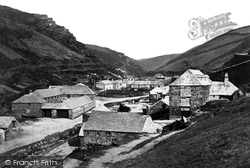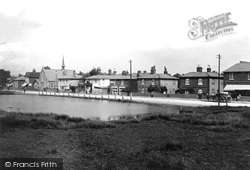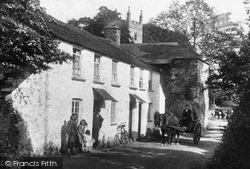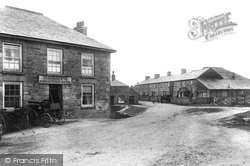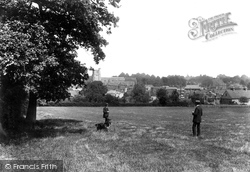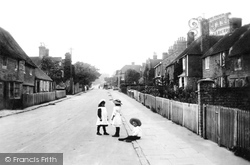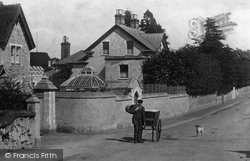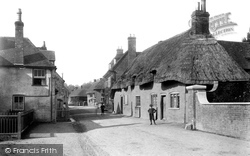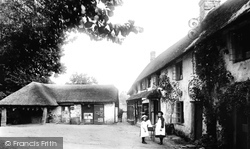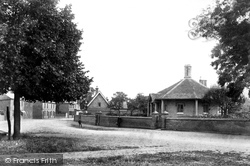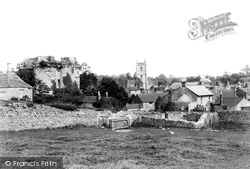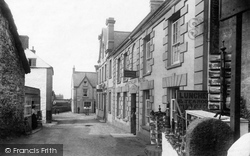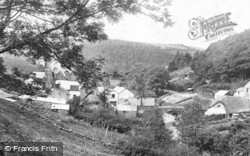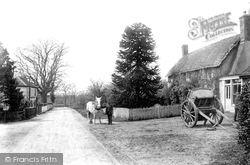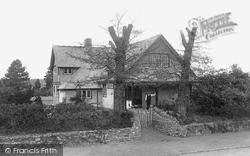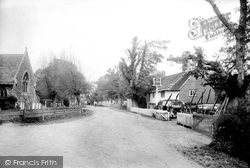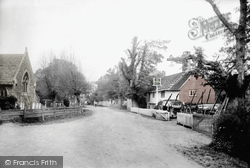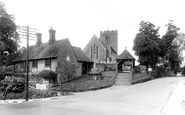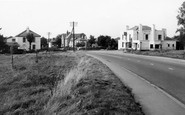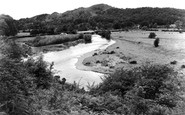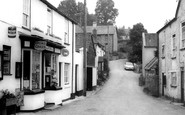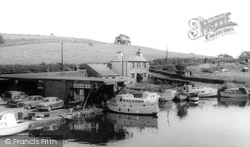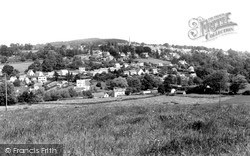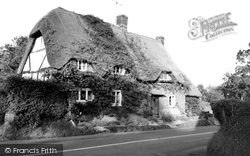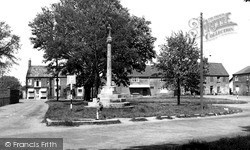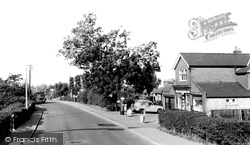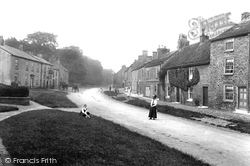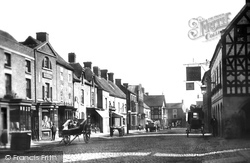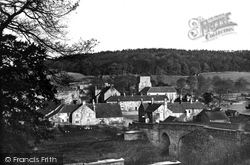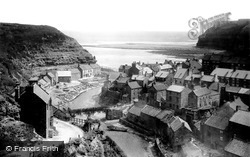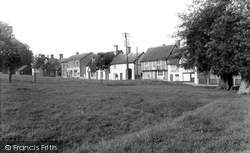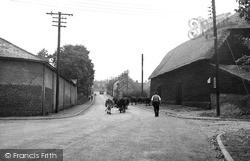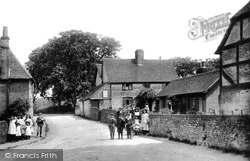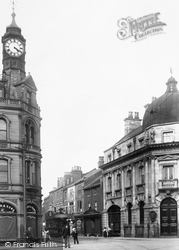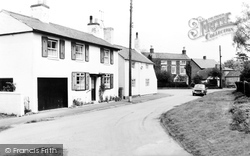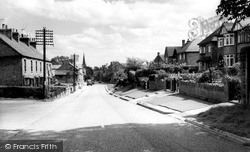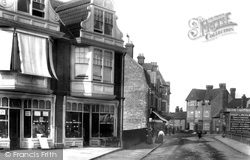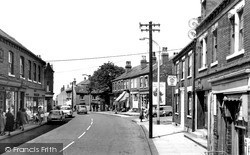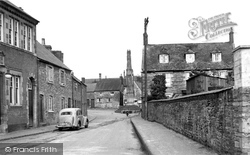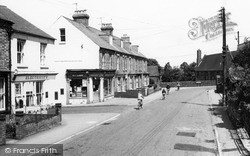Places
36 places found.
Those places high-lighted have photos. All locations may have maps, books and memories.
- Leitrim Village, Republic of Ireland
- Swanley Village, Kent
- Ewden Village, Yorkshire
- Glentrool Village, Dumfries and Galloway
- Aycliffe Village, Durham
- Clewer Village, Berkshire
- Crookham Village, Hampshire
- Church Village, Mid Glamorgan
- Carn Brea Village, Cornwall
- Elan Village, Powys
- Luccombe Village, Isle of Wight
- North Hinksey Village, Oxfordshire
- Cumeragh Village, Lancashire
- Hulland Village, Derbyshire
- Park Village, Northumberland
- Model Village, Warwickshire
- Outlet Village, Cheshire
- Hansel Village, Strathclyde
- Portlethen Village, Grampian
- Stockbridge Village, Merseyside
- Talbot Village, Dorset
- Abbey Village, Lancashire
- Aber Village, Powys
- Chelmer Village, Essex
- Dog Village, Devon
- Glenprosen Village, Tayside
- Hutton Village, Cleveland
- Heathfield Village, Oxfordshire
- Grange Village, Gloucestershire
- Perkin's Village, Devon
- Mawsley Village, Northamptonshire
- Wynyard Village, Cleveland
- Albert Village, Leicestershire
- Brockhall Village, Lancashire
- Cardrona Village, Borders
- Dutch Village, Essex
Photos
13,159 photos found. Showing results 3,301 to 3,320.
Maps
517 maps found.
Books
26 books found. Showing results 3,961 to 3,984.
Memories
4,713 memories found. Showing results 1,651 to 1,660.
Home
I was born in Canada, but grew up in Pulborough as did my mother and uncle, Maureen and Frank Darby. When I knew we were returning to Canada, a place I didn't remember, it broke my heart, and I vowed never to forget the people and sights of ...Read more
A memory of Pulborough in 1964 by
The White Horse
I was born in the "White Horse" on 7th October 1937. Mrs Woolard helped in the pub and looked after me when my Mum and Dad were busy. Mrs Woolard and her husband Alf lived on the other side of the Green. There were lots of ...Read more
A memory of Potter Street in 1930 by
Vyrnwy House, Meifod
This photo was taken from a spot very close to Vyrnwy House where my great Aunt Winifred Morris used to live. Broniarth Hill is behind the photographer. I used to visit her quite often in the 50's, usually on a Sunday when my ...Read more
A memory of Meifod in 1951 by
Bell Ringing
The is the church I was baptised in. As I child I used to go bell ringing here (St James the Less). We used to climb up the very narrow stairwell being very careful not to slip. Every week we used to practise. There were six bells and ...Read more
A memory of Dorney in 1960 by
Our Home On The Village Green
I lived in Quainton in the 1950s, on the corner of The Green and Lower St. My family had the drapers shop. I remember bonfire night on the green, rolling down Mill Hill, Christmas carols, ballet lessons in the ...Read more
A memory of Quainton in 1957 by
Circus At The Village Hall C 1955
We lived in the village pub The Lifeboat Inn. I remember being flooded and all the beer barrels floating in the cellar, mum cooking mussels given in lieu of beer, which were left in the bath and climbed up the ...Read more
A memory of Brancaster in 1955 by
My Ancestry
I have wonderful memories of visting Compton Martin in the 1990s and a lunch at the Ring O' Bells. My strong interest in the village is because my grandfather Charles Stallard was born there in 1879, his father George in 1844 ...Read more
A memory of Compton Martin by
Swanley Village 1934
I was born in Model Cottages,1934. in the Village at that time there was a bakers, (my father was one of the bakers he only had to cross the road to go to work), a grocery store next to the public house, post office, butchers, ...Read more
A memory of Swanley in 1930 by
Just A Kibbuth Lad
For those who have never been to our village called Kibworth, it is worth noting locals call it "Kibbuth". You live in either "Top Kibbuth"- Kibworth Harcourt or "Bottom Kibbuth"- Kibworth Beauchamp. I myself ...Read more
A memory of Kibworth Harcourt in 1973 by
The Post Office
I grew up in Combpyne but I remember that we used to have a van that came up to the village from Musbury 2 or 3 times a week with everything any body might need from paraffin to bread. I remember the man who owned the post office ...Read more
A memory of Musbury in 1960 by
Captions
5,033 captions found. Showing results 3,961 to 3,984.
The mainstay of Galgate villagers from 1790 to 1960 was the silk mill, where 400 people worked during the mill's heyday.
Winding, hedge-bound lanes and low-built cottages thatched with wheat straw were typical of Inskip, Treales, Wharles and other Fylde villages.
When the old telephone box (centre) was moved and placed next to the village pump, it had to be listed to prevent its being replaced with a modern 'shower cubicle' version!
At the heart of the village is the churchyard with its 99 yew trees; surrounding it are stone houses, shops and hotels, some steeply gabled and half-timbered, others Georgian with elegant facades.
half-hipped timbered frame, visible at the gable end, and attic windows plus roadside flowers, early 16th- century Anthorn Cottage continues to give character to Blandford Road in the linear village
Substantially rebuilt by the Earl of Leicester in the 1880s, the village provides homes and a community for his staff. The far right building was the Reading Room; today it is the social club.
The roughly rectangular Market Place (or village green) with its medieval cross is surrounded by attractive houses with shops on the east side.
hedgerows and trees lie clues to an 18th-century rural landscape; the enclosures of the 1760s were hated by John Clare, the Northamptonshire poet, for its deleterious effect on the lives of ordinary village
The village shop and post office in the distance beyond the children still functions, but the shop-like Gilling Club (to the left of the woman in the middle of the road) has become a house
The village features in the story surrounding Wulfhere of Mercia and his two sons Ulfred and Rufin.
Also featured is the bridge over the Derwent by which visitors from the south enter the village. Those coming from the north pass under the Abbey's embattled 15th-century gatehouse.
The village is said to have begun as the result of a shipwreck when survivors from a French ship scrambled ashore and decided to stay.
The village got its red telephone box (centre) listed in 1987. The former post office, called Hunter's, is to its right.
Beyond is the village lock-up and Cage House.
Fifteen children have been neatly assembled by the photographer in front of the brick and half-timbered cottages that comprised this small village – it was originally called Clandon Abbots.
Here ducks dabble peacefully in the beck which runs through the centre of the village, while a mother proudly poses with her baby.
Coal mining was a major employer: Doncaster was ringed with pit villages. The first sod was cut at Brodsworth Colliery in 1905 and at Hatfield Main in 1911.
The advent of the internal combustion engine saw the demise of the village blacksmith, although the art is making something of a comeback with the demand for decorative railings and gates.
Beyond the crossroads is the old village, with its three- storey, flat-fronted late 18th-century houses, while towards the camera the quality of the secondary layer of houses, including those of the
The town comprises two villages, Upper and Lower Sheringham, the former more peaceful and retaining its fishing and farming traditions.
As well as a Somali Village, the Exhibition also contained a switchback railway and also a water chute, which cascaded into this lake.
Situated just to the east of Leeds, the village of Kippax was the scene of much coal mining since 1410. The estate surrounding the old Kippax Hall contained many unusual black deer.
Rows of stone cottages surround the Cross in Geddington village centre, built in 1294 to commemorate Queen Eleanor of Castile, wife of Edward I.
At the end of the street is the Village Centre, a former school, while to its left you can just see the chancel of the medieval parish church.
Places (114)
Photos (13159)
Memories (4713)
Books (26)
Maps (517)


